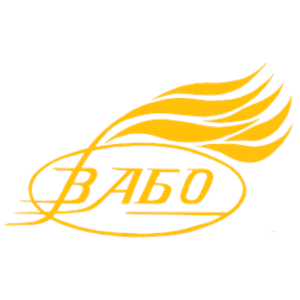FORMATION AND ENVIRONMENTAL-TOXICOLOGICAL STATE OF THE RIVER NETWORK OF UKRAINE
DOI:
https://doi.org/10.32782/2786-5681-2024-2.05Keywords:
river basins, suspended matter, wastewater, water ecosystems, pollution, toxicityAbstract
The aim of the article is an attempt, based on theoretical explanations, to experimentally prove the existence of different effects on the water resources of the river basins of the Polissia and Forest Steppe natural zones by the nature of pollution and the composition of impurities, and to determine indicators of ecological sustainability of the main water ecosystems of Ukraine based on data on the coefficients of their quality state. The study was conducted on the example of the Teteriv and Vorskla rivers. The methodology of the work included operational tools generally accepted for natural sciences, which, in particular, included observations, generalizations, experiments and comparison of statistical data recommended for hydroecological studies of river basins. The scientific novelty of the work lies in the fact that for the first time, from the point of view of the urgent need to correct the complex ecological situation in river basins caused by sewage processes and the consequences of water acidification involving chloride and sulfate ions and increasing its toxicity due to the presence of heavy metals, it was proposed by determining the sources pollution of watercourses, a number of specific measures to restore the state of water resources. It is proposed to determine the value of the calculation of the environmental index as a direct proportion to the product of the buffering coefficients of the water environment and the self-cleaning coefficient, divided by the product of the acidification coefficients and toxicity coefficients. The calculation is carried out in order to assess the state of ecological stability of the aquatic environment and determine its ability to withstand or adapt to external influences. This index is proposed to objectively determine the level of ecological stability of the aquatic ecosystem. The result of the ecological index calculation is a numerical value that allows you to compare different water ecosystems, determining their ecological stability and vulnerability to various external influences. It was determined that the Teteriv river is characterized by a high content of organic carbon, mineral forms of phosphorus, ammonium nitrogen and suspended substances in wastewater. On the other hand, a similar situation is observed for Vorskla, but with different dynamics of influence. The solid flow of stormwater has a large content of suspensions and, by analogy with the Teteriv river, is characterized by significant volumes of pollution. Conclusions. According to the ecological stability of the main water ecosystems of Ukraine, the Horyn, Desna and Teteriv rivers are included in the first class with the highest level of water quality. The rivers Pripyat, Styr and the estuary of the Western Bug are recognized in the second and third class as having a good condition. On the other hand, the Ustya and Kogylnyk rivers are categorized as having an unsatisfactory state of ecosystems in terms of water quality. Due to the extremely disorderly system of applying pesticides, mineral fertilizers and other means of plant protection in agriculture, which is a significant factor in the pollution of water bodies adjacent to land, in order to protect water ecotones, it is necessary to strengthen control over compliance with all production regulations in order to preserve and restore biodiversity.
References
Гриб Й. В. Екологічна оцінка стану річкових басейнів рівнинної частини території України (охорона, відновлення, управління). Рівне. 2000. 405 с.
Гриб Й. В., Клименко М. О., Сондак В. В., Войтишина Д. Й. Моніторинг природокористування та стратегія реабілітації порушених річок і озерних екосистем. Рівне. Вісник НУВГП. 2015. 424 с.
Забокрицька М. Р., Хільчевський В. К., Манченко А. П. Гідроекологічний стан басейну річки Західного Бугу на території України: монографія. К.: Ніка Центр. 2006. 184 с.
Кривцова В., Куклінська М., Красінська О., Йоргенсен С. Річкові екосистеми під антропогенним тиском: ідеї для відновлення та управління. Екологічна інженерія. 2016. № 91. С. 640–652. DOI: 10.1016/j.ecoleng.2016.01.068.
Левківський С. С., Падун M. M. Раціональне використання і охорона водних ресурсів. К.: Либідь. 2006. 280 с.
Національна доповідь про стан навколишнього природного середовища України у 2021 р. URL: https://mepr.gov.ua/wp-content/uploads/2023/01/Natsdopovid-2021-n.pdf (дата звернення: 18.07.2024).
Хімко Р. В., Мережко О. І., Бабко Р. В. Малі річки – дослідження охорона, відновлення. К.: Інститут екології. 2003. 378 с.
Яцик А. В., Бишовець Л. Б., Богатов Є. О. Малі річки України: Довідник. К.: Урожай. 1991. 259 с.







